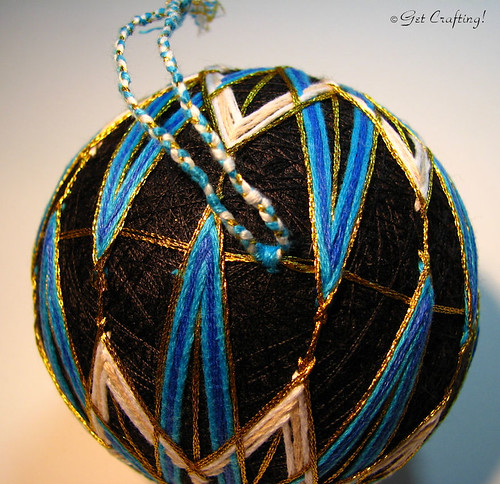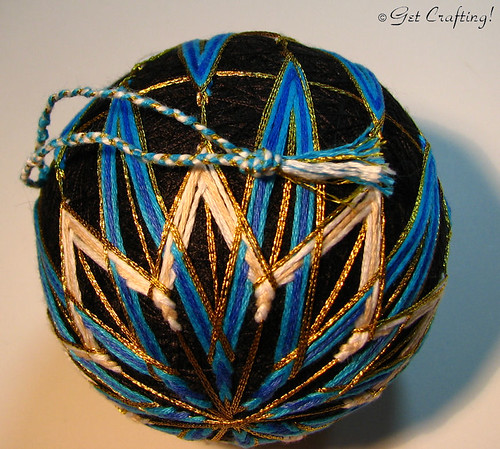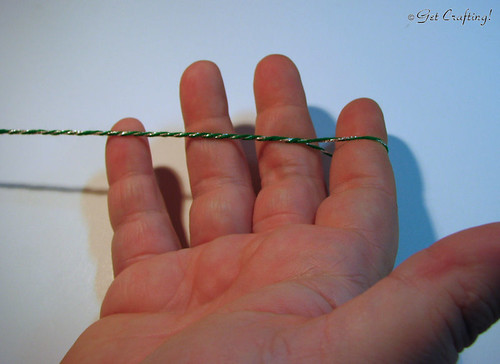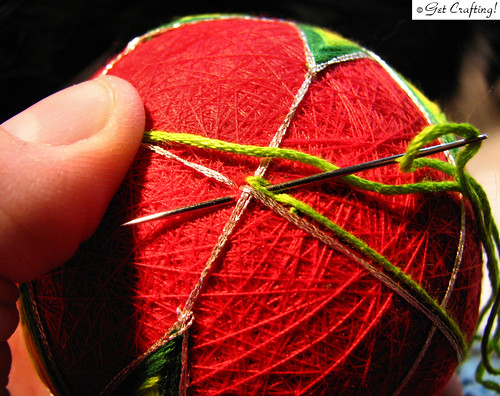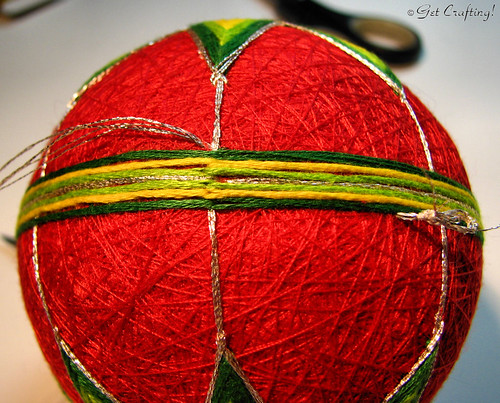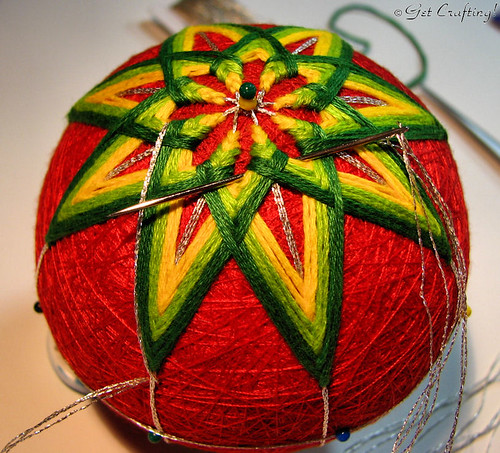When I first saw the new line of Martha Stewart yarns, I have to admit I had low expectations for the eyelash yarn. That's because I have low expectation for eyelash yarn in general. I find them a major pain to work with, and heaven help you if you make a mistake and need to undo it!
I was impressed with this yarn, however. First off, there's a nice range of colours with marvelous sparkle to them. Then I actually picked up a ball. I had expected it to be scratchy from the glitter strands, but it was surprisingly soft. I was impressed.
So when I decided to make a last minute decoration for the staff decorated tree at the Michaels I teach at, I picked up a couple of balls in Blue Topaz. I decided to make a garland similar to one I have made before, using glow in the dark yarn.
Once actually working with the yarn, I was again impressed. It was smooth to work with and there was no tangling of any kind. Very nice.
For the garland pictured below, I used a 5.00mm hook and some white yarn I had on hand (Loops and Threads Impeccable) along with the Glitter Eyelash.
To start, make a chain to the desired length. I never measured the final length for this, but I'm guessing it was about 13-15 feet long.
To make a gentle spiral, two stitches are worked into each chain in the foundation.
Start by making a loop by working a sc into the 6th chain from the hook, or whatever number of chains for the size of loop you want. Work 1 hdc in the next ch.
Place a stitch marker at the opposite end of the foundation chain, 7 ch from the end or the number of ch in your loop plus 2.
Work 2 dc into each ch to the marker. Work 1 hdc into the ch the marker is in. Create a loop by working a sc into the next ch and the last chain together.
Fasten off yarn.
Join with Glitter Eyelash into the hdc stitch at either end of the garland. Work 1 sc into each stitch to the hdc at the opposite end.
Fasten off yarn.

When I first started this, I had intended to make a denser glitter row by working 1 ch in between each sc. It was looking great, but used far more yarn than I had. Unfortunately, I had already worked about 1 3/4 balls of Glitter Eyelash before I realized there was no way I had enough to finish the entire garland. I would have needed almost 4 balls to finish it that way (which, by the way, I recommend as a variation. Just make sure you have lots of Glitter Eyelash).
I had to do the one thing I dreaded most with an eyelash yarn. I would need to undo nearly two balls worth.
Much to my surprise, it came undone as smoothly as any basic yarn! There were no tangles at all, no catches, no twisting. It was beautiful!

To store the garland, wrap it around a core of some kind. I used the thick cardboard tube from a package of extra wide aluminum foil. There's a couple of spots of sticky glue where the foil was attached to the tube, which I covered with tape. Just hook the loop around one end of the tube, then wind the garland around it. To fit this garland onto the tube, I had to jam it together pretty tightly. The tube also makes it easier to place the garland on your tree. Just hook a loop onto your tree, then unwind it as you go.
This garland took me about 3 hours to do, including the time it took to rip all the eyelash yarn and work it back up again. This can easily be worked up in a single evening.
As for the Glitter Eyelash yarn from Martha Stewart, I definitely recommend it! It's got great colours, lovely sparkle, a soft texture, is lovely to work with, and is even a delight to undo if you make a mistake. Fantastic stuff!












